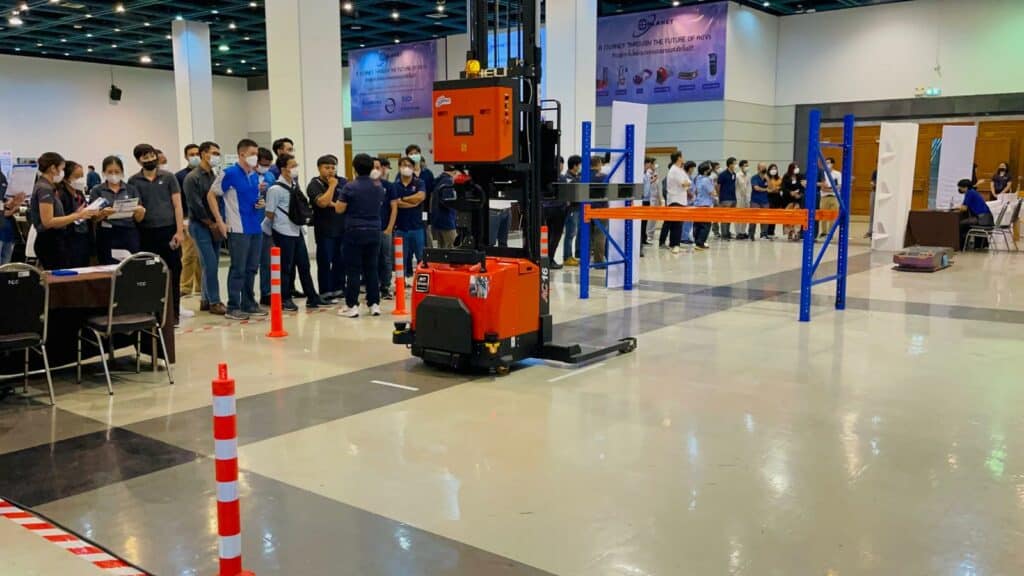5 Predictions on the Future of AGVs and AMRs
Automation technology has come a long way. But what about the future of AGVs and AMRs?
The first AGVs in the 1950s ran on rails or were guided by wires. While advanced for the time, these AGVs were replaced in the 1970s by magnetic guidance, and surpassed in the 1990s by laser guidance. Natural navigation technology (such as ANT) disrupted the field in the early 2000s.
But what comes next?
A recent seminar in Thailand, hosted by our distributors, Planet T & S Co., took a deep dive into different navigation technologies, the state of the automation market in Asia, and made some bold predications about the future of AGVs and AMRs.
Our own Fanny Dorta, Sales Manager for the APAC region, was present, and spoke about the benefits of ANT navigation.
Here she shares five takeaways about the evolution of autonomous navigation technology – and what comes next.

1. Technology Has Evolved and Will Continue To Do So
In the last 70 years, automatic navigation technology has moved from rail-guided to vehicles which can navigate completely autonomously – even outside.
What can we learn from the evolution? We can’t assume that technology will remain static, yet when selecting technology there is a risk to selecting something which may become rapidly obsolete. The answer? Selecting a technology from a company which continues to innovate.
2. Asia Represents 50% of the Global AGV fleet – And is Growing Rapidly
Figures from Market Research Future illustrate that 50% of the global AGV fleet is based in Asia. Currently, these vehicles are valued at over one billion USD. And the numbers are predicted to keep on increasing. By 2030, the Asian AGV market will be more than that of the US and Europe combined.

What’s driving this growth? The “Asian Tiger” continues to roar, with rapid economic growth and strong industrial expansion contributing to the increase in demand for AGVs. A growing demand for efficiency in manufacturing and logistics also contributes to the adoption of automation and drives the future of AGVs and AMRs.
3. Versatile Applications for a Versatile Technology
In the USA and Europe, AGVs are typically employed in automotive and electronic manufacturing; healthcare and cleaning; warehousing and logistics. In Asia, AGVs do all of this and more. We see many more applications, including assembly, and even theme park rides.
Why so many different applications? Asia is a dynamic environment which a strong history of innovation and experimentation. Experimenting with robotic applications are no exception. And, as the crowd at the seminar demonstrated, there is a hunger for knowledge.

4. Competition = Innovation
The AGV playing field in Asia is crowded, with many local companies entering the market. Strong competition leads to rapid innovation, especially with improvements in affordability. However, many of these local options are not available outside of Asia, whether that is because the brand is less well known, or due (unfairly) to poor reputation.

5. Governmental Support for Automation and the Future of AGVs and AMRs
Governments throughout Asia strongly support automation.
Incentives, subsidies and policies have been put in place to encourage private businesses to adopt automation. On a governmental level, the future of AGVs and AMRs is predicted to combat an aging labor force, while increasing the profits of some of its most important industries.
Let’s Meet
The BlueBotics team regularly attends seminars, expos and events around the world. View upcoming events, or get in touch for a free, no obligation call at a time which works for you.

Let's get Started
Take the first step to automating your vehicle.
Schedule a call with our expert team today.
